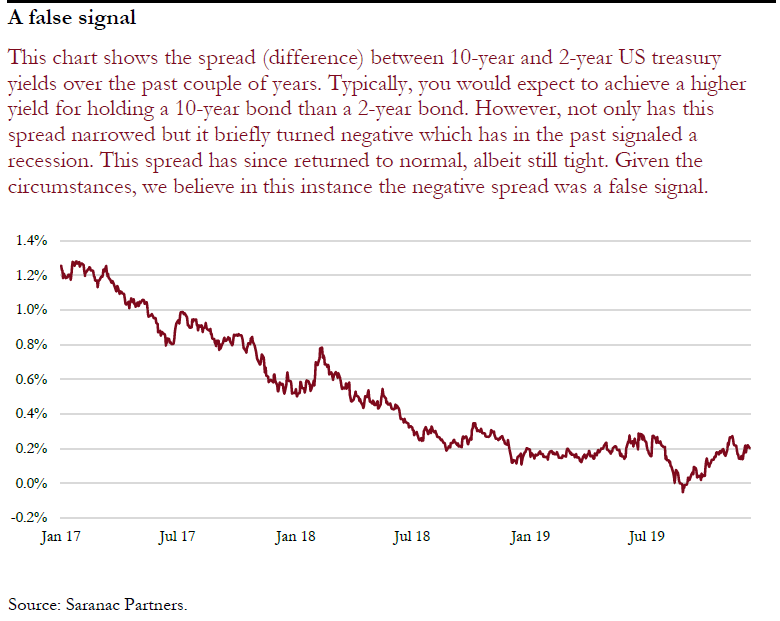There are times when the macro environment moves rapidly and there are times when it seems to stand still. The latest month falls into the latter category. We continue to believe that economic data is pointing to a modest upturn in activity, particularly in those regions hardest hit in the current slowdown.
Zeitgeist: the long-term context
While the global economy can be characterised as late cycle, this does not necessarily portend doom and gloom. Our longer-term thesis of an extended cycle with low growth, low inflation and a lack of imbalances still holds and this is consistent with an outlook in which equity markets should modestly outperform other asset classes.
Weak, but positive, growth is likely to see supportive monetary policy continue and attention is turning to fiscal policy as another potential stimulus to global growth.
Macro drivers: medium-term environment
Recent data has been supportive of our view that macro momentum could be reaching a turning point, responding to the concerted easing of monetary policy this year from central banks globally.
European PMI data has bottomed out and is starting to recover, as is data from other economic bellwethers such as Korea and Taiwan. In contrast, US data has been more mixed as the manufacturing ISM has slid below 50, although the non-manufacturing sector continues to show strength.
We reviewed the spectrum of views across our external research providers and it is clear there is broad dispute between them and little consensus. Recession risk remains high and some research houses believe that recession in 2020 is the central case scenario. Fed tightening in 2018 was a policy mistake, which has triggered the slowing in global trade and will result in recession, notwithstanding recent policy easing.
Others believe that the resilience and strength of the US consumer is key to avoiding recession and that the cycle will continue. A friendly Fed, upswing in the inventory and cap-ex cycle and further corporate earnings growth paints a modestly bullish picture for next year.
Geopolitics is a headwind but the direction of travel for the most important disputes, namely tariff wars between the US and China, seems to be improving.
Signals: short-term indicators
Optimism reached uncomfortably high levels in early November but has since eased off and our sentiment indicators are giving no signal at this stage.
Recent outperformance from value-orientated sectors and the more cyclical areas of the market has reversed although overall momentum has remained positive.
We remain biased towards more positive market scenarios, in particular those that point to modest growth and a supportive policy backdrop. A market melt-up is another scenario which has gained credence recently. Our broad risk indicator has moved slightly higher to between 4 and 5 on a scale from 1 to 10.





